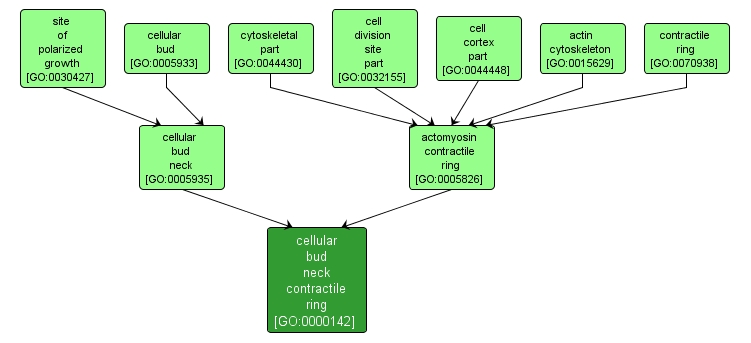| Desc: |
A contractile ring, i.e. a cytoskeletal structure composed of actin filaments and myosin, that forms beneath the plasma membrane at the mother-bud neck in mitotic cells that divide by budding in preparation for completing cytokinesis. An example of this structure is found in Saccharomyces cerevisiae. |














